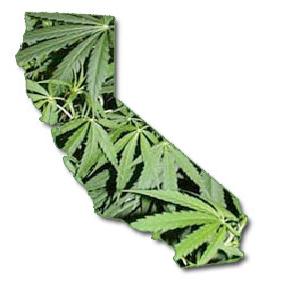California’s adult-use cannabis market is being overshadowed by other markets in per-capita sales

With a population that exceeds the entire of Canada, California is a U.S. state that boasts some serious potential for cannabis market domination. In 2016, voters approved Proposition 64 to legalize cannabis for recreational purposes statewide. During the first year of legal sales in 2018, retail stores recorded $2.5 billion in transactions.
While the sales figures seem promising, struggling businesses and a lurking black market are concealed beneath the shiny facade that represents California’s cannabis market; high tax rates, illicit cannabis consumption and tight restrictions are creating a dent in the colossal market’s per-capita sales.
Data shows that, by the second year of California’s recreational market, per-capita cannabis sales worked out to be a mere $70 per customer. Now, let’s put that into perspective by comparing it with some other thriving markets: Colorado’s second year per-capita sales were $99, whereas Oregon’s second year per-capita sales were $97 and Washington state’s second year per-capita sales were $89.
Why is California’s adult-use cannabis market slacking?
Analysts say that California’s recreational cannabis sales revenue could have been bulked up by an extra $1 billion, had it performed better. Upon analyzing the market, a number of factors stick out as potential profit-drainers, such as:
- Cannabis business restrictions set by California municipalities – There are limitations in regards to the locations in which cannabis businesses are allowed to operate in California. In fact, three-quarters of cities and counties statewide have outlawed retail stores.
- The sheer strength of California’s illicit market – Despite the fact that consumers now have ample access to legal weed in California, it doesn’t look like the black market will evaporate anytime soon; approximately 75 percent of all cannabis sales in California are believed to come from the illicit market. Since the illegal market does not impose hefty retail tax rates quite like the legal market does, consumers who aren’t keen to pay $9.65 per ounce tax on wholesale adult-use cannabis are seeking out street dealers as a desperate alternative.
- Cannabis is still an illegal substance under federal law – Doing business in California’s legal weed industry is not as simple as it might be for business owners that specialize in alternative industries. Why? The plant is still considered to be a Schedule 1 substance by the federal government. As an illicit substance that falls into the same category as heroin, LSD and cocaine, legal cannabis businesses are struggling to raise capital, secure banking services and avoid high tax rates.
High tax rates are dwarfing the growth of California’s recreational cannabis market
Extortionate state and local tax rates are turning customers away from the legal cannabis market in California. However, changes are transpiring across the “green” state; Monterey County and Oakland have reduced their taxes as a means of boosting sales and dismantling black market activity in their regions. If other communities follow in their footsteps, California’s cannabis market could ascend to new realms of success.
A handful of lawmakers have introduced bills that would reduce the excise tax or completely abolish the cultivation tax. Assembly Bill 3157 – the latest in a string of efforts to minimize cannabis tax rates in California – would lower the current rate of 15 percent to 11 percent. If effectuated, it is sure to stimulate cannabis sales growth in California.
California’s cannabis tax revenue figures are impressive
Fortunately for California’s adult-use cannabis market, tax revenue is good. Following the legalization of recreational weed in January 2018, tax revenue has hit the $1 billion mark; based on state-published figures. This revenue – in addition to being the piggy bank for regulatory oversight – has been poured into various channels of community enhancement, including childcare programs for low-income families, public safety grants, cannabis research and land cleanup projects.
During the first three months of legal sales, cannabis tax revenue in California topped $72.6 million. This figure rose to $172.7 million during the last three months of 2019. Annual cannabis tax revenue looks set to reach $1 billion this year, so long as the growth rate is consistent.
However, the California Department of Tax and Fee Administration published updated figures on March 6; crushing hopes of those who were optimistic about reaching the $1 billion milestone in 2020. Based on the latest figures, the state’s quarter-to-quarter tax revenues represented the lowest since legalization ensued — 1.5 percent or a $2.6 million increase. Comparatively, increases averaged 15.5 percent in previous quarters.
It’s safe to say that the higher tax rates and regulatory costs associated with running a business in California are having a negative impact on the legal market as a whole. Consumers are wising up and realizing that they can purchase their bud elsewhere. Nonetheless, while black market weed may be cheaper, it is not lab-tested and therefore poses a threat to anyone who consumes it.







